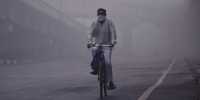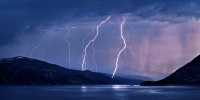A submerged village in Italy is now visible for the first time in more than a decade, leading tourists and locals to discover what remains of the settlement after years of being underwater? About 70 years ago, the small town of Curon in northern Italy was submerged. The move – highly controversial at the time – was seen as urgent to build a hydroelectric dam mixing two small natural lakes, Lake Karan and Lake Resia. Then the new artificial lake Resia was born in 1950 and the old cause is gone. The new body of water measures six kilometers in length and is one kilometer (3.72 by 0.61 miles) in its width.
Some residents returned to the city of Karun anew. The only reminder of the old village was the church bell tower, believed to have been built in 1357. The tower rises above water level – a scene that has made it a tourist destination, as well as inspiring a book and a TV series. The lake has been temporarily drained for some reconstruction of the dam and its piping, and the old Karun has reappeared, which has led people to visit the remains of the old village.
Roads, stairs, roofs and a few sellers can still be seen. And above all, the Bell Tower continues to amaze. In 2009, the water receded so that the tower could be repaired. In winter, as the lake often freezes, people often find their way all the way to the tower – which has created an unusual urban legend. People say they can still hear the bells ring, but there have been no bells since July 18, 1950.
Lake Resia – or Reschensee as it is known in German – is located in South Tyrol, an alpine region bordering Austria and Switzerland. The photo, shared on social media, shows steps, pavilions and walls on what would usually be a lake bed, near the most recognizable 14th-century church tower.
Luisa Azzolini from the region tweeted that walking in the middle of the rubble of the former village was a “strange feeling”. The village was lost to water in 1950 when authorities decided to build a dam and merge the two nearby lakes – despite objections from residents.














